|
시장보고서
상품코드
1628118
저전이 잉크 시장 : 시장 기회, 성장 촉진요인, 산업 동향 분석, 예측(2025-2034년)Low Migration Ink Market Opportunity, Growth Drivers, Industry Trend Analysis, and Forecast 2025 - 2034 |
||||||
세계의 저전이 잉크 시장은 2024년에 4억 4,870만 달러로 평가되었으며, 2025년부터 2034년까지 연평균 복합 성장률(CAGR) 5.7%로 성장할 것으로 예측됩니다.
이 성장의 주요 요인은 식품의 안전성과 오염에 대한 소비자의 의식이 증가함에 따라 더욱 안전한 식품 포장 솔루션에 대한 수요가 증가하고 있다는 것입니다. 포장 재료로부터 식품으로의 화학물질의 전이를 방지하는 것을 목적으로 하는 규제의 강화가 저전이 잉크의 채용을 뒷받침하고 있습니다. 이러한 특수 잉크는 세계 안전 기준을 준수하고, 심각한 건강 문제를 해결하면서 포장 상품에 대한 신뢰를 높이고 있습니다.
포장의 안전성이 선호됨에 따라 저전이 잉크는 다양한 산업, 특히 최소한의 오염 위험이 필요한 용도 분야에서 지지를 받고 있습니다. 이 잉크는 포장재의 안전성을 높이기 위해 널리 사용되며 제품의 무결성을 유지하는 신뢰할 수 있는 솔루션을 제공합니다. 그 채용은 진화하는 소비자의 선호와 포장의 규제 요건을 충족하는 것의 중시 증가에 의해 더욱 촉진되고 있습니다.
시장은 인쇄 공정에 의해 플렉소 인쇄, 디지털 인쇄, 오프셋 인쇄, 그라비아 인쇄로 구분됩니다. 플렉소 인쇄는 주요 부문이며 2024년에는 2억 1,270만 달러의 수익을 창출합니다. 플렉소 인쇄는 다양한 기재에 대응할 수 있는 다목적성과 화학물질의 전환을 최소한으로 억제하면서 고품질의 인쇄를 실현할 수 있는 능력을 통해 안전한 패키징 솔루션이 필요한 업계에 이상적인 선택사항이 되고 있습니다. 이 방법의 효율성과 적응성은 저전이 잉크 시장에서 우위를 강화하고 있습니다.
| 시장 범위 | |
|---|---|
| 시작년 | 2024년 |
| 예측 연도 | 2025-2034년 |
| 시작 금액 | 4억 4,870만 달러 |
| 예측 금액 | 7억 9,290만 달러 |
| CAGR | 5.7% |
최종 사용자별로 시장은 음식, 의약품, 퍼스널케어 등으로 나뉩니다. 식음료 분야는 시장 점유율의 42.7%를 차지합니다. 오염을 방지하기 위한 엄격한 지침이 있기 때문에 저전이 잉크는 포장재가 안전 기준을 충족하는 데 중요한 역할을 합니다. 이 부문의 성장은 안전하고 고품질의 포장 제품에 대한 수요 증가를 반영하여 소비자의 신뢰와 규제 준수 유지에서 저전이 잉크의 역할을 강화하고 있습니다.
미국에서는 2024년 시장 규모가 1억 1,230만 달러였습니다. 이 지역의 엄격한 규제 상황은 포장의 안전성과 지속가능성에 대한 의식이 증가함에 따라 잉크 제형의 기술 혁신을 뒷받침합니다. 마찬가지로 북미는 발전한 산업과 견고한 위생 및 환경규제로 선진 패키징 솔루션의 거점으로 대두되고 있습니다. 컴플라이언스와 지속가능성에 중점을 둔 이 지역은 낮은 전환성 잉크 시장의 선두 주자로 자리매김하고 있습니다.
목차
제1장 조사 방법 및 조사 범위
제2장 주요 요약
제3장 업계 인사이트
- 생태계 분석
- 밸류체인에 영향을 주는 요인
- 이익률 분석
- 파괴
- 장래의 전망
- 제조업체
- 유통업체
- 공급자의 상황
- 이익률 분석
- 주요 뉴스 및 대처
- 규제 상황
- 영향요인
- 성장 촉진요인
- 안전한 식품 포장에 대한 수요 증가
- 의약품 및 헬스케어 분야의 성장
- 지속 가능한 패키징 솔루션의 선진화
- 업계의 잠재적 위험 및 과제
- 저전이 잉크의 고비용
- 품질 관리를 위한 복잡한 제조 공정
- 성장 촉진요인
- 성장 가능성 분석
- Porter's Five Forces 분석
- PESTEL 분석
제4장 경쟁 구도
- 서문
- 기업 점유율 분석
- 경쟁 포지셔닝 매트릭스
- 전략 전망 매트릭스
제5장 시장 규모 및 예측 : 인쇄 프로세스별(2021-2034년)
- 주요 동향
- 플렉소 인쇄
- 디지털
- 오프셋
- 그라비아
제6장 시장 규모 및 예측 : 최종 사용자별(2021-2034년)
- 주요 동향
- 음식
- 의약품
- 퍼스널케어
- 기타(전자, 담배 제품)
제7장 시장 규모 및 예측 : 지역별(2021-2034년)
- 주요 동향
- 북미
- 미국
- 캐나다
- 유럽
- 영국
- 독일
- 프랑스
- 이탈리아
- 스페인
- 러시아
- 아시아태평양
- 중국
- 인도
- 일본
- 한국
- 호주
- 라틴아메리카
- 브라질
- 멕시코
- 중동 및 아프리카
- 남아프리카
- 사우디아라비아
- 아랍에미리트(UAE)
제8장 기업 프로파일
- Agfa-Gevaert
- Altana
- Epple Druckfarben
- Flint Group
- Huber Group
- INX International
- Marabu GmbH
- Siegwerk Druckfarben
- Sun Chemical
- Toyo Inks
The Global Low Migration Ink Market, valued at USD 448.7 million in 2024, is projected to grow at a CAGR of 5.7% between 2025 and 2034. This growth is primarily driven by the rising demand for safer food packaging solutions, aligning with increasing consumer awareness of food safety and contamination concerns. Stricter regulations aimed at preventing chemical migration from packaging materials to food products are boosting the adoption of low migration inks. These specialized inks ensure compliance with global safety standards, enhancing trust in packaged goods while addressing critical health concerns.
As packaging safety becomes a priority, low migration inks are gaining traction across various industries, especially in applications requiring minimal contamination risks. These inks are widely used to enhance the safety of packaging materials, offering a reliable solution for maintaining product integrity. Their adoption is further fueled by evolving consumer preferences and the growing emphasis on meeting regulatory requirements in packaging.
The market is segmented based on printing processes into flexography, digital, offset, and gravure. Flexography is the leading segment, generating USD 212.7 million in revenue in 2024. Its versatility across different substrates and ability to deliver high-quality prints while minimizing chemical transfer make it an ideal choice for industries requiring safe packaging solutions. This method's efficiency and adaptability reinforce its dominance in the low migration ink market.
| Market Scope | |
|---|---|
| Start Year | 2024 |
| Forecast Year | 2025-2034 |
| Start Value | $448.7 Million |
| Forecast Value | $792.9 Million |
| CAGR | 5.7% |
By end-user, the market is divided into food and beverage, pharmaceuticals, personal care, and others. The food and beverage sector accounts for 42.7% of the market share. With stringent guidelines to prevent contamination, low migration inks play a crucial role in ensuring that packaging materials meet safety standards. The sector's growth reflects the rising demand for safe and high-quality packaged products, strengthening the role of low migration inks in maintaining consumer trust and regulatory compliance.
In the United States, the market was valued at USD 112.3 million in 2024. The region's strict regulatory landscape, combined with a heightened awareness of packaging safety and sustainability, drives innovation in ink formulations. Similarly, North America is emerging as a hub for advanced packaging solutions due to its developed industries and robust health and environmental regulations. This focus on compliance and sustainability continues to position the region as a leader in the low migration ink market.
Table of Contents
Chapter 1 Methodology & Scope
- 1.1 Market scope & definition
- 1.2 Base estimates & calculations
- 1.3 Forecast calculation
- 1.4 Data sources
- 1.4.1 Primary
- 1.4.2 Secondary
- 1.4.2.1 Paid sources
- 1.4.2.2 Public sources
Chapter 2 Executive Summary
- 2.1 Industry synopsis, 2021-2034
Chapter 3 Industry Insights
- 3.1 Industry ecosystem analysis
- 3.1.1 Factor affecting the value chain
- 3.1.2 Profit margin analysis
- 3.1.3 Disruptions
- 3.1.4 Future outlook
- 3.1.5 Manufacturers
- 3.1.6 Distributors
- 3.2 Supplier landscape
- 3.3 Profit margin analysis
- 3.4 Key news & initiatives
- 3.5 Regulatory landscape
- 3.6 Impact forces
- 3.6.1 Growth drivers
- 3.6.1.1 Increasing demand for safe food packaging
- 3.6.1.2 Growth in pharmaceutical and healthcare sectors
- 3.6.1.3 Advancements in sustainable packaging solutions
- 3.6.2 Industry pitfalls & challenges
- 3.6.2.1 High costs of low migration inks
- 3.6.2.2 Complex production process for quality control
- 3.6.1 Growth drivers
- 3.7 Growth potential analysis
- 3.8 Porter's analysis
- 3.9 PESTEL analysis
Chapter 4 Competitive Landscape, 2024
- 4.1 Introduction
- 4.2 Company market share analysis
- 4.3 Competitive positioning matrix
- 4.4 Strategic outlook matrix
Chapter 5 Market Size and Forecast, By Printing Process, 2021-2034 (USD Million) (Kilo Tons)
- 5.1 Key trends
- 5.2 Flexography
- 5.3 Digital
- 5.4 Offset
- 5.5 Gravure
Chapter 6 Market Size and Forecast, By End User, 2021-2034 (USD Million) (Kilo Tons)
- 6.1 Key trends
- 6.2 Food and beverage
- 6.3 Pharmaceuticals
- 6.4 Personal care
- 6.5 Others (electronics, tobacco products)
Chapter 7 Market Size and Forecast, By Region, 2021-2034 (USD Million) (Kilo Tons)
- 7.1 Key trends
- 7.2 North America
- 7.2.1 U.S.
- 7.2.2 Canada
- 7.3 Europe
- 7.3.1 UK
- 7.3.2 Germany
- 7.3.3 France
- 7.3.4 Italy
- 7.3.5 Spain
- 7.3.6 Russia
- 7.4 Asia Pacific
- 7.4.1 China
- 7.4.2 India
- 7.4.3 Japan
- 7.4.4 South Korea
- 7.4.5 Australia
- 7.5 Latin America
- 7.5.1 Brazil
- 7.5.2 Mexico
- 7.6 MEA
- 7.6.1 South Africa
- 7.6.2 Saudi Arabia
- 7.6.3 UAE
Chapter 8 Company Profiles
- 8.1 Agfa-Gevaert
- 8.2 Altana
- 8.3 Epple Druckfarben
- 8.4 Flint Group
- 8.5 Huber Group
- 8.6 INX International
- 8.7 Marabu GmbH
- 8.8 Siegwerk Druckfarben
- 8.9 Sun Chemical
- 8.10 Toyo Inks












